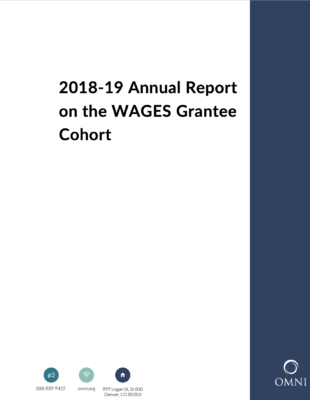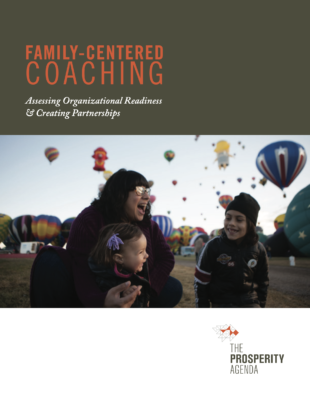
Building Collaborative Models
This slide deck from the Women’s Fund of Greater Birmingham provides examples, exercises, and statistics for collaborations within a two-generation framework.
View / DownloadPartnership is at the core of whole family work. Aligning and knitting together a range of supports, programs, and services that place family at the center is one of the most important ways that programs can change how families experience and are supported by programs.
This section offers tools and case studies from a range of sources along with various approaches to whole family partnerships.

This slide deck from the Women’s Fund of Greater Birmingham provides examples, exercises, and statistics for collaborations within a two-generation framework.
View / Download

Jeanne Jackson, President of the Women’s Fund of Greater Birmingham, shares the lessons and her reflections from their two-generation pilot, Prescription for Success.
View / Download
Evaluation report of Year 1 WAGES cohort through which grantees are focused on whole family work and partnerships
View / Download
The Family Centered Coaching toolkit, developed with support from the W.K. Kellogg Foundation and now supported by the Prosperity Agenda, includes an organizational assessment and guide to developing p whole family partnerships.
View / Download
Developed with the support of the W.K. Kellogg Foundation, Family-Centered Coaching is a set of strategies, tools, and resources that help human service organizations reinvent how they engage with, and help, families that are experiencing poverty. Rooted in an understanding of the institutional forces that prevent families from moving forward, Family-Centered Coaching equips staff with the mindset, tools, and skills to work with families holistically towards financial wellness.
View / Download
A collection of resources for those practicing collective impact to find the tools, resources, and advice they need. A network of individuals coming together to share experience and knowledge to accelerate the effectiveness and adoption of collective impact.
View / DownloadWhole family, multi-generational approaches meet the needs of and provide opportunities for children and the adults in their lives together. These approaches are highly contextual, and may be called “whole family,” “two-generation or two-gen,” and “multi-generational” approaches in some organizations, communities, and contexts. Particularly for Indigenous communities, an approach that supports multiple generations within a home or family is important. The goal of a whole family, multigenerational approach is to ensure economic, educational, and health stability and mobility for the whole family, using mechanisms and strategies that give both generations in the family a balloon, and not one a dead weight.
This guide uses “whole family” for consistency and ease of reading; and encompasses the meanings of these other terms.
This guide also uses “parents,” which includes caregivers, mothers, fathers, grandparents, and others who are in the lives of children. Families are defined by the families themselves in our view, rather than by an outside agency, and the guide reflects this as well.